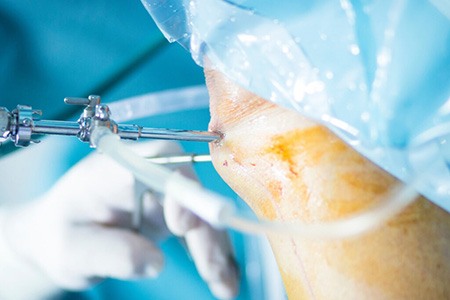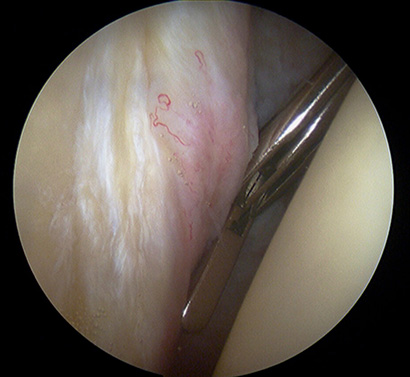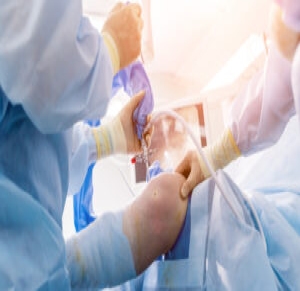Arthroscopy or arthroscopic surgery is a minimally invasive surgical procedure used to diagnose and treat issues inside a joint.
The word “arthroscopy” is coined from two Greek words, “arthro” and “skopein.” “Arthro” means joint and “skopein” means to look. These two words combined perfectly describe the core concept of arthroscopy.
According to OSHA and the Bureau of Labor Statistics, there are 400,000 musculoskeletal injuries in the USA every year. It can be argued that people who participate in both professional and recreational sports sustain more of such injuries.
Depending on the injury severity, a board of physicians will conclude whether the patient would benefit from surgery and what sort of surgery would be the most appropriate.
In most cases, the surgery is not necessary. Still, if it is, the orthopedic surgeons are most likely to attempt arthroscopy before any other type of surgery if it is appropriate. Arthroscopy is mostly used to diagnose and treat shoulders, knees, wrists, hips, and ankles. Other joints can be treated this way, as well.
How is Arthroscopy Performed?
Arthroscopy is mainly performed under general anesthesia. In some cases, it can be performed under spinal or local anesthesia. It all depends on different factors, one of them being the location of the surgery.
If arthroscopy is performed to examine a joint, a small incision is made. The incision is only big enough for an arthroscope to be inserted inside the joint that is being examined.

The arthroscope is roughly the same size as a drinking straw, and it is equipped with a small camera, lights, and even precision tools. In that way, an arthroscope can illuminate the inside of the joint and transfer that image through the fiber optics to a big screen.
The surgeon can see the joint interior without damaging the structure of the healthy joint tissues more than it is absolutely necessary. It is possible to examine the cartilage, ligaments, and other types of tissue and repair the damage simultaneously.
When to Choose Arthroscopic Surgery?
Diagnosing joint injuries will not start with arthroscopy. The first steps involve physical examination and X-rays. After that, if the results are inconclusive, more non-invasive testing is performed, like MRI or CT.
While this type of imaging can usually give the surgeon a clear picture of the scope and the severity of the injury, they are not enough in some cases.
That is when orthopedic surgeons can decide to perform arthroscopy. It can always give more details about the injury than imaging, and it can sometimes be even more detailed than “open” surgery while being less invasive at the same time.
Some of the issues that are best diagnosed and treated by arthroscopy include :
- Synovitis and similar inflammations
- Rotator cuff tendon tear
- Impingement syndrome
- Meniscus tear
- Chondromalacia
- ACL tear
- Carpal tunnel syndrome
- Loose bone or cartilage
- Some arthritis symptoms

What Are Possible Complications?
Complications occur in less than all 1% of arthroscopic procedures. Therefore, they are highly unlikely. Even if they do, most of the complications (but not all) are easily resolved, and they don’t pose serious risks. Some of the possible complications include :
- Infection
- Phlebitis
- Bleeding
- Swelling
- Nerve damage
- Blood vessel damage
- Instrument malfunctions
What Is Recovery Like?
When it comes to the surgery wound, it takes as little as just several days for it to heal. On the other hand, the joint that underwent arthroscopy will take several weeks to heal, and it will require rehabilitation to restore the movement range of the joint.
Wound – the dressing can be removed as soon as the morning after the surgery. It can be covered using adhesive strips. The incisions are small, and they heal quickly.
Joint – depending on the joint and the scope of the arthroscopic surgery, it can take from just several days to as long as several weeks to restore normal physical activity. Normal daily activities are resumed within a few days. Athletic activities take more time, and they are more likely to be resumed in a couple of weeks. Physical therapy and exercise can speed up recovery.
It is important to note that recovery times are highly individual, and it is not possible to guarantee the precise duration of the healing period.
Arthroscopy has not entirely replaced the “open” joint surgery. Some conditions can only be addressed by entirely opening the joint and repairing it or even replacing it. However, when there is a chance to minimally cut into the joint, every orthopedic surgeon will take it. Furthermore, some surgeries are performed as a combination of traditional and arthroscopic surgery.
Either way, it is necessary to discuss the pros and cons of every kind of surgery with your physician before undergoing it. This goes for arthroscopy, just like any other invasive procedure.






